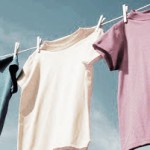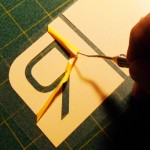Could white ink allow you to expand into new markets? Imagine the possibilities of expanding your services to include printing on leather, cardboard, wood, stone or some other non-traditional material. Most ink jet printers don’t make room for white ink today, but that is bound to change in the future as printers and ink manufacturers […] Read more »
Plotter Cutting Heat Transfer Films
If you are a sign maker and have a plotter or printer, garment decorating with heat transfer films is one of those prize opportunities that requires a very short learning curve and an investment in a heat press. The cost for a good clamshell press runs about $1000 to $1200, but you can buy one […] Read more »
The Trouble with Shrinking Shirts
Tips for Working with Heat Transfer Films Should it be a surprise that cotton tee-shirts shrink? Even us guys know that! Cotton garments shrink. 100% cotton can shrink as much as 10% to 12%. Especially if you simmer the clothes in hot water in your washer, and then bake it on high in the dryer until […] Read more »
See Supply55 Products at SGIA Orlando October 23rd, 24th and 25th, 2013
See Supply55 Products at SGIA Orlando October 23rd, 24th and 25th, 2013 – BannerPRO – ReelPRO – Guardian Laminators – Guardian Dye Sublimation Calenders – Direct-To-Fabric Printers and more . . . Get a Free Expo Pass to the 2013 SGIA Expo Orlando, October 23-25, 2013 from Supply55 Use Code: 109963E Orange County Convention Center, South […] Read more »
Caring for Garments with Heat Transfers

I am frequently asked how many times you can wash a garment with a heat transfer applique before it deteriorates. Durability of this material all depends on the type of material that you are using and garment care. If you wash and dry the garment properly, a high quality polyurethane applique should last just as long as the garment itself. Read more »
Cutting and Weeding Tips for Heat Transfer Films

Not all polyurethane heat transfer films are the same. That’s because many of these films aren’t 100% polyurethane. Instead, the polyurethane based films are blends of polyurethane and vinyl. These blends are stiffer. Read more »
Pressing Heat Transfer Films

Successful application of heat transfer materials depends on three primary variables: time, temperature and pressure. Not all heat transfers heat press at the same setting. Hotter is not always better. In fact, higher temperatures can make matters worse. Before heat pressing, refer to the manufacturer’s literature for the recommended time and temperature settings. Read more »


